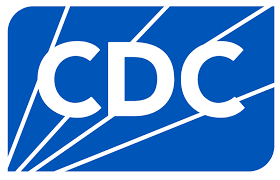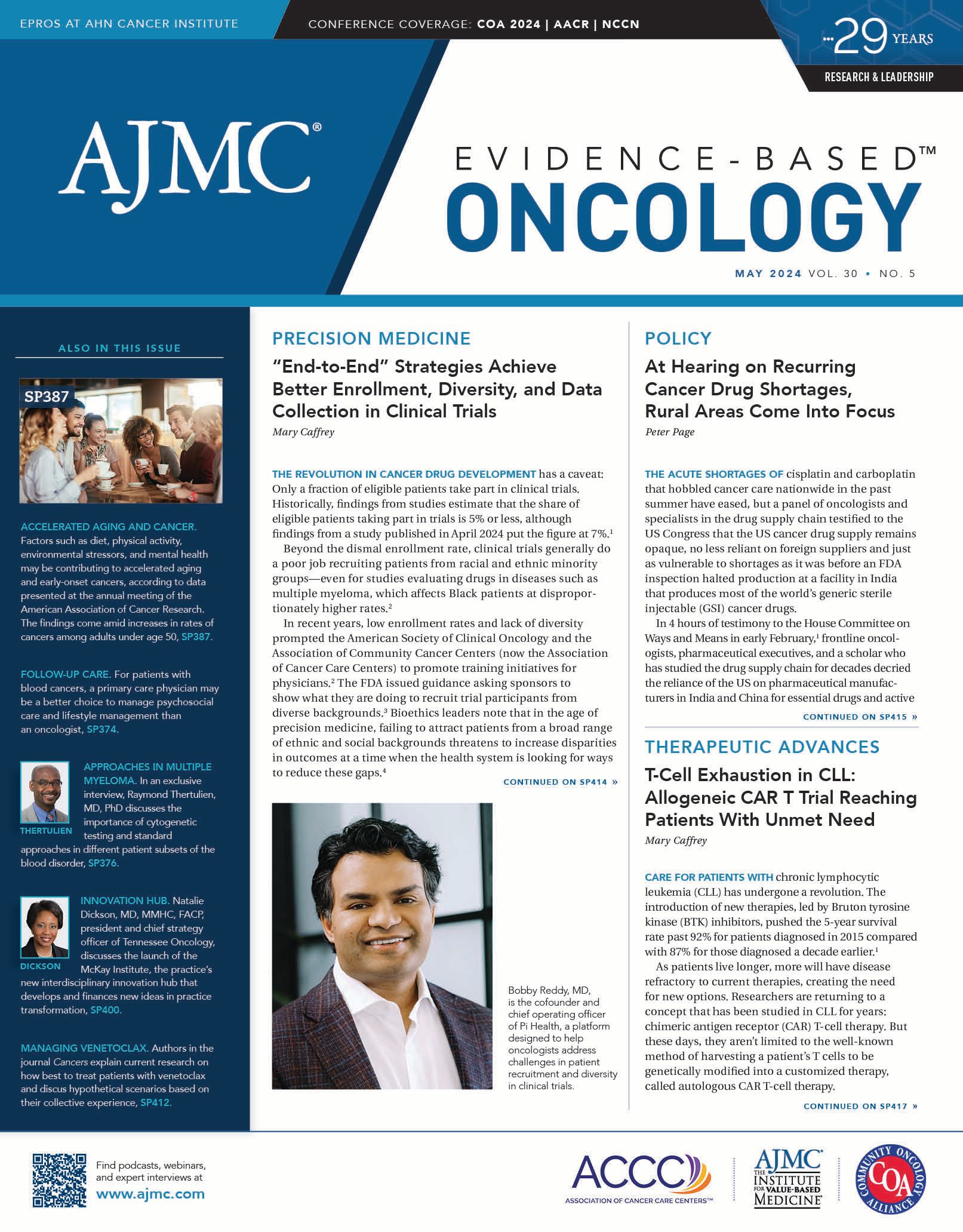Publication
Article
Evidence-Based Oncology
May 2024 Health Equity News
Mammography Use Is Linked to Social Determinants, Revealing Need to Bridge Gaps With Community Support
While mammograms are crucial for early detection of breast cancer and can save lives, social determinants of health and health-related social needs create barriers to access, especially for those with financial hardship, lack of transportation, or social isolation.
Mammography use is associated with decreased deaths caused by breast cancer, but social determinants of health (SDOH) and health-related social needs (HRSNs) present barriers to receiving mammography, according to new CDC data. Therefore, health care providers, social services, community organizations, and public health programs need to offer services to address these issues.
Image credit: CDC

The 2022 Behavioral Risk Factor Surveillance System (BRFSS) data, reviewed by CDC researchers, estimated the prevalence of mammography use within the previous 2 years among women aged 40 to 74 years based on jurisdiction, age, and sociodemographic factors.
Mammograms, capable of early detection of breast cancer, are suggested for patients aged 50 to 74 at least every 2 years. However, SDOH, defined as the conditions where people are born, live, learn, work, play, worship, and age, can affect health, function, and quality of life outcomes. In addition, HRSNs are adverse social conditions on an individual level that can negatively affect a person’s health or health care access. The study set out to investigate mammography use and specific SDOH and HRSN barriers.
A total of 117,466 patients aged between 40 and 74 years were among the study population. Across states, Rhode Island represented the highest population of women aged 50 to 74 years who received mammography within the previous 2 years (85.5%) and South Dakota (77.8%) had the highest rate among women aged 40 to 49 years. The states with the lowest rate for these age groups were Wyoming (64.0%) and New Mexico (44.5%), respectively. The only states in which women aged 40 to 49 years had higher rates of mammography use compared with women aged 50 to 74 years were Mississippi, Pennsylvania, and South Dakota.
Black women in both the 40-49 and 50-74 age groups had the highest prevalence of mammography use within the previous 2 years (65.2% and 82.9%, respectively). The higher the educational attainment and increased income of patients, the more likely it was that they received mammograms over the past 2 years. Women among both age groups who did not have access to health insurance had reduced mammography participation (40-49 years, 32.7% vs 58.7%; 50-74 years, 37.4% vs 73.9%) and so did patients who did not have personal health care providers (32.7% vs 63.4% and 42.2% vs 79.1%) in comparison with those who did have access.
Mammography use prevalence decreased in women aged 50 to 74 years as the number of SDOH and HRSNs increased. Patients who did not experience adverse SDOH or HRSNs had a median jurisdiction mammography use prevalence of 83.2% (range, 69.6%-91.0%). Among those with 1, 2, or 3 to 11 adverse SDOH or HRSNs, the median state mammography use prevalence rates were 77.1% (range, 57.9%-89.5%), 73.3% (range, 63.6%-83.5%), and 65.7% (range, 44.8%-83.8%).
Life dissatisfaction was a large barrier to mammogram use prevalence because the more social isolation, employment, and financial obstacles a patient experiences, the less likely they are to get a mammogram. The study utilized a logistic regression model and found life dissatisfaction results were especially notable for women aged 40 to 49. In women aged 50 to 74 years, associations with not having mammograms over the past 2 years were found for lacking reliable transportation, cost barriers, social isolation, unemployment, food stamps, and other forms of life dissatisfaction. The factor with the strongest association with poor mammogram access among women in both age groups was financial hardship.
Study limitations were largely due to the BRFSS’ use of self-reported data not verified through medical records, which could result in over- or underestimation of mammography use. The study also may have a large portion of women at high risk for breast cancer development; therefore, frequent screening recommendations were not noted. Generalizability is limited because SDOH and HRSNs were not analyzed for all 50 states nor are they specifically related to mammography use. Lastly, the BRFSS response rate was 45% and may not represent the total adult population in the findings.
The study highlights the importance of a better understanding and spread of information on SDOH and HRSNs to improve policies while funds are allocated toward community organizations focused on the targeted needs of diverse patient populations. If health care providers, facilities, and public health programs address SDOH and HRSNs, then they may have the potential to increase mammogram prevalence and other preventive health services.
Reference
Miller JW, King JA, Trivers KF, et al. Vital Signs: mammography use and association with social determinants of health and health-related social needs among women — United States, 2022. MMWR Morb Mortal Wkly Rep. Published online April 9, 2024. doi:10.15585/mmwr.mm7315e1
Health Equity Adjustments in Medicare HVBP Program Will Benefit Safety Net Hospitals, Study Shows
Medicare’s upcoming health equity adjustment (HEA) in the Hospital Value-Based Purchasing (HVBP) program will significantly benefit safety net hospitals and those serving high proportions of Black patients, according to results of a recent study in JAMA Health Forum.1
The policy change, which will take effect in fiscal year 2026, will assign additional points—and therefore favorably reclassify bonus and penalty statuses—to hospitals serving higher proportions of patients who are dually eligible for Medicare and Medicaid.
The HVBP program began in 20122 and has since been a cornerstone value-based initiative for Medicare, giving financial bonuses or penalties to acute care hospitals based on quality measures in patient outcomes, the patient experience, safety, and efficiency. However, the study authors explained that previous research shows hospitals serving disadvantaged and historically marginalized populations are disproportionately penalized under the HVBP program, whereas hospitals that do not serve these populations receive more substantial financial bonuses.
“Because the program adjusts for medical risk factors but not social risk factors that are strongly associated with performance measures, many clinicians and policy experts have raised concerns that the HVBP program is widening disparities in care by unfairly redirecting resources away from disadvantaged hospitals,” the authors wrote. Considering those concerns, CMS finalized significant policy changes to the HVBP program to advance health care equity, including the HEA for hospitals serving large proportions of dual-eligible patients beginning in fiscal year 2026.2
The HEA will be calculated with 2 values: an underserved multiplier and a measure performance scaler. The underserved multiplier assigns a score between 0 and 1 based on the proportion of dual-eligible inpatient stays, and the measure performance scaler allocates 0, 2, or 4 points to hospitals in the bottom, middle, or top performance tercile, respectively.
To estimate the potential effects of the HEA on hospital performance and payment adjustments and identify the characteristics of hospitals that may see favorable reclassification with the HEA, the study authors analyzed data from all 2676 hospitals participating in the HVBP program in 2021. The researchers calculated HEA points and HVBP payment adjustments (bonuses and penalties) using publicly available data on program performance and hospital characteristics linked to Medicare claims.
During fiscal year 2021, 1470 (54.9%) of the hospitals participating in the HVBP program received bonuses and 1206 (45.1%) received penalties. Factoring in HEA, 119 hospitals (9.9%) were reclassified to bonus status and 102 hospitals (6.9%) were reclassified to penalty status. Overall, there was a mean (SD) payment adjustment decrease of $4534 ($90,033) after HEA, with a maximum reduction of $1,014,276 and a maximum increase of $1,523,765.
Safety net hospitals saw the largest net-positive changes in payment adjustments, at $28,971,708 at the aggregate level. Hospitals caring for a greater proportion of Black patients saw net-positive changes of $15,468,445 after HEA. Safety net hospitals were significantly more likely to experience increases in payment adjustments (574 of 683 [84.0%]) vs non–safety net hospitals (709 of 1993 [35.6%]), with an adjusted rate ratio (ARR) of 2.04 (95% CI, 1.89-2.20). Additionally, hospitals serving a high proportion of Black patients were more likely to experience payment adjustment increases (396 of 523 [75.7%]) than hospitals not serving a high proportion of Black patients (887 of 2153 [41.2%]), with an ARR of 1.40 (95% CI, 1.29-1.51).
Other factors associated with increased payment adjustments after HEA were being in a rural vs urban location (ARR, 1.44; 95% CI, 1.30-1.58), being in the South vs Northeast (ARR, 1.25; 95% CI, 1.10-1.42), and being in a Medicaid expansion state vs a nonexpansion state (ARR, 1.16; 95% CI, 1.06-1.28).
The study authors noted several limitations, including the use of historical data, whereas actual performance and the proportion of patients dually eligible for Medicare and Medicaid will be determined by fiscal year 2026 data. Also, the determination of hospitals treating a high proportion of Black patients was made using Medicare hospitalizations, but the authors noted that recent evidence suggests the proportion of Medicare discharges for Black patients is nearly the same as the proportion of all discharges.
Overall, the findings suggest that the addition of HEA to the HVBP program will help mitigate the disproportionate penalization of safety net hospitals, hospitals serving high proportions of Black patients and groups that meet tests of health-related social needs. The authors also highlighted the thoughtfulness of the policy change, which adjusts payments rather than the current quality measures to avoid changes in performance requirements. And although the HEA will lower penalties to disadvantaged hospitals, the measure performance scaler incentivizes high-quality care. Relative to alternative approaches, the authors argue the final policy change maximizes benefits to disadvantaged hospitals while optimizing the total payment adjustments overall.
“The findings of this study suggest that HEA is an important first step toward mitigating the regressive nature of value-based payment programs,” the authors wrote. “However, the HVBP program is still built on and constrained by the traditional fee-for-service architecture; the movement toward population-based models may enable more innovative and progressive approaches to advance health equity.”
References
1. Liu M, Sandhu S, Joynt Maddox KE, Wadhera RK. Health equity adjustment and hospital performance in the Medicare Value-Based Purchasing program. JAMA. Published online March 27, 2024. doi:10.1001/jama.2024.2440
2. CMS issues final rule for first year of hospital value-based purchasing program. CMS. April 29, 2011. Accessed March 29, 2024. https://www.cms.gov/newsroom/fact-sheets/cms-issues-final-rule-first-year-hospital-value-based-purchasing-program






